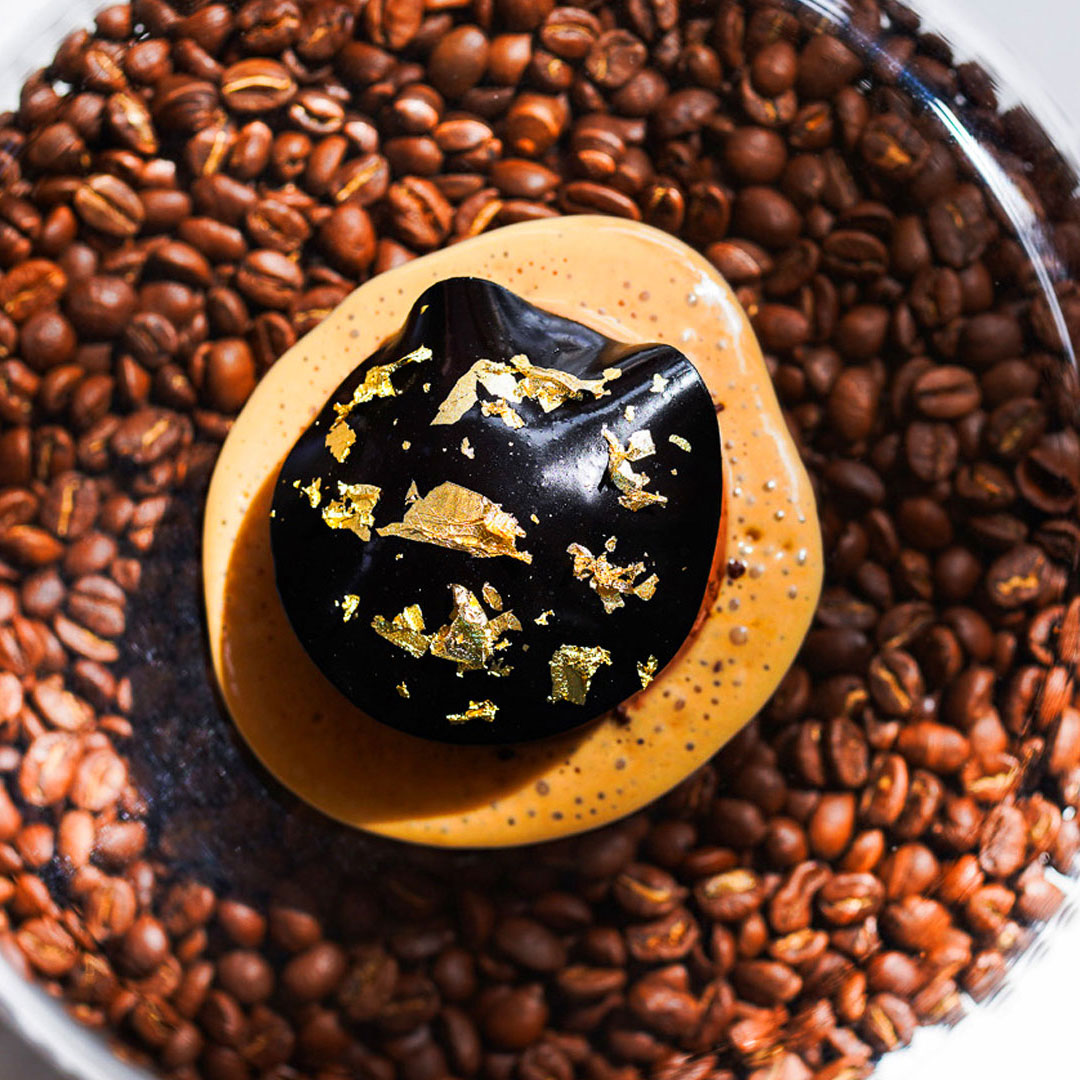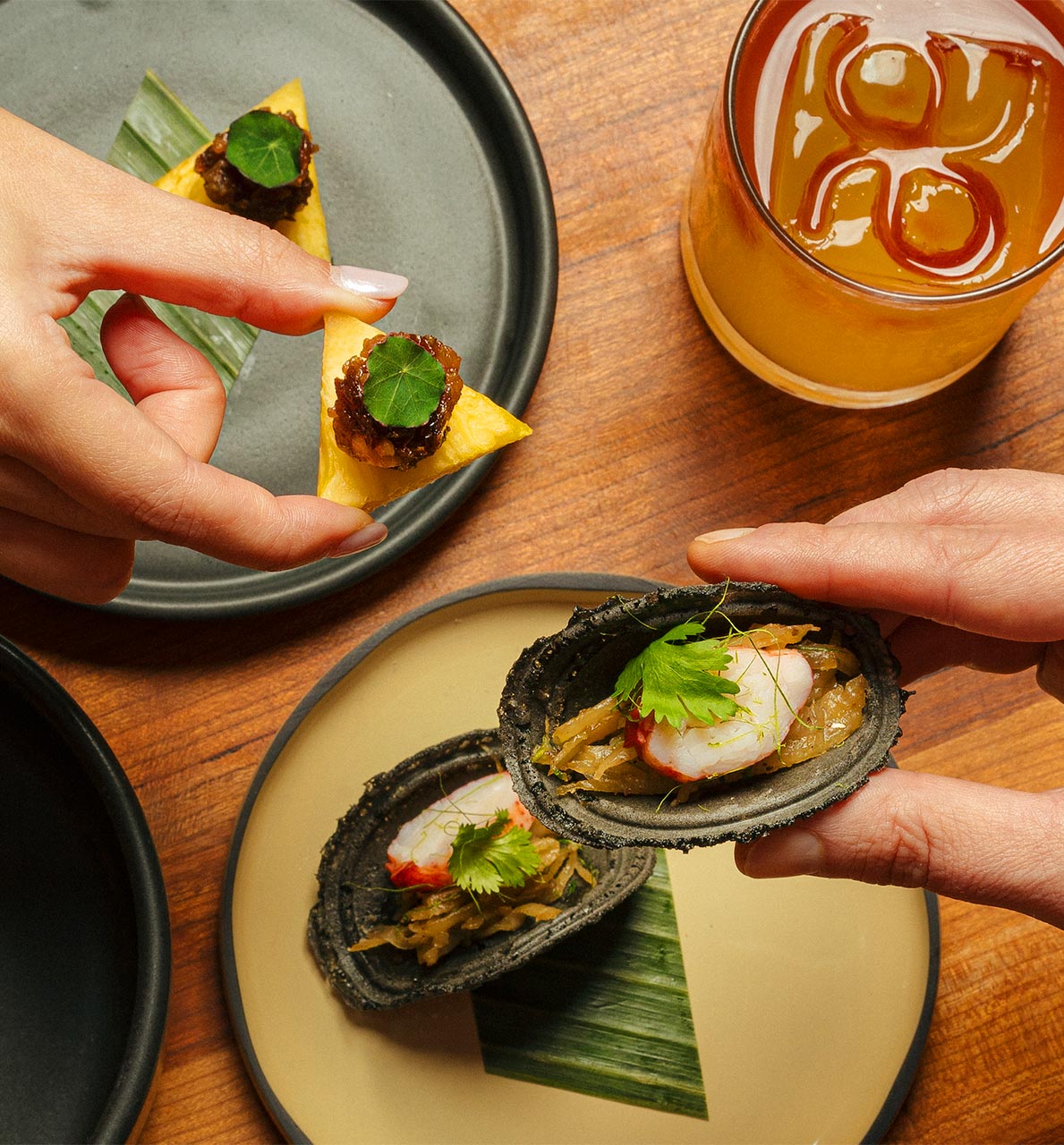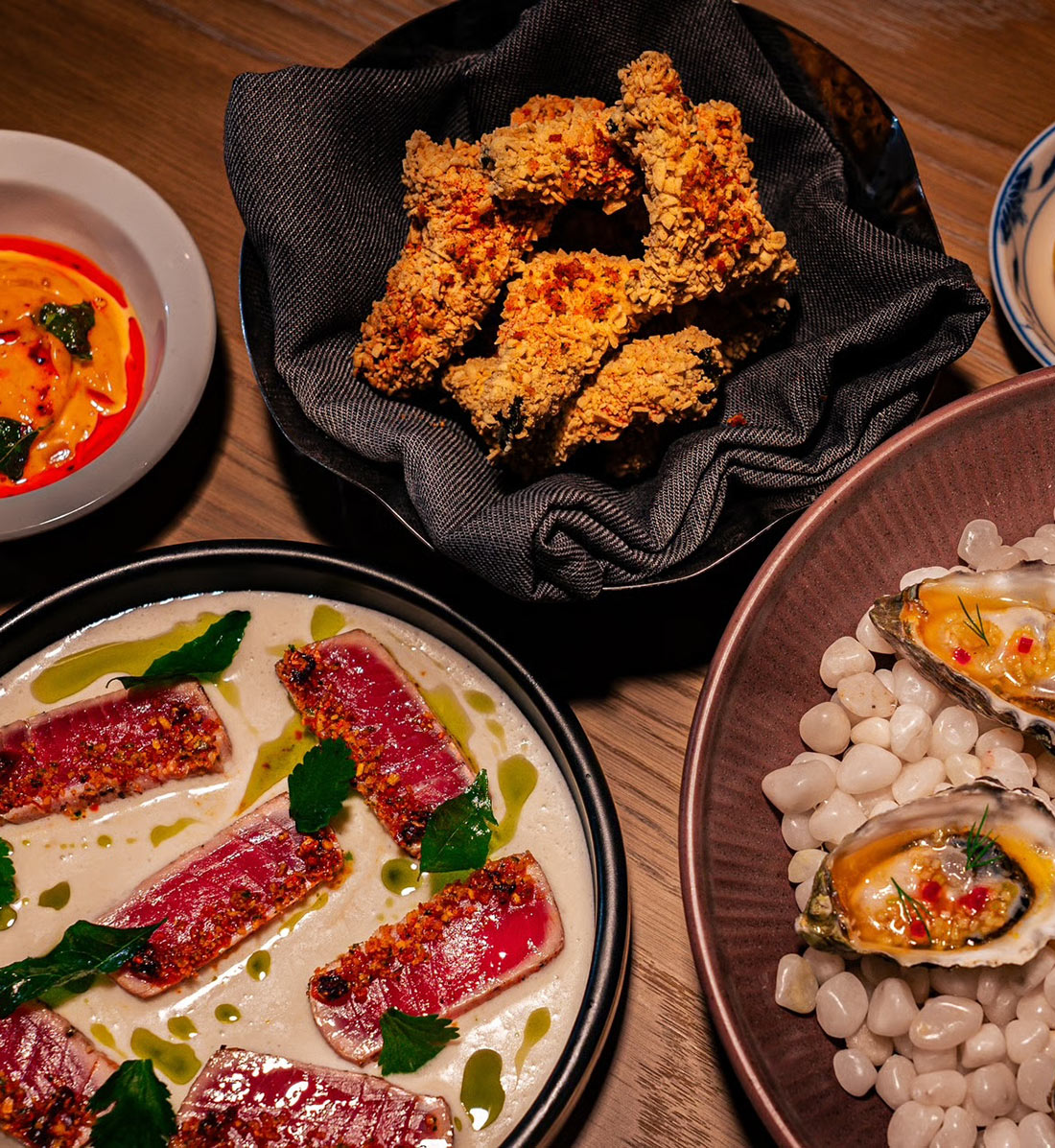In today's world, where sustainability and environmental consciousness are becoming increasingly important, businesses of all kinds are seeking ways to reduce waste and minimize their ecological footprint. This ethos extends even to the world of cocktails, where innovative bar programs and cocktails are redefining what it means to enjoy a drink responsibly.
Below, Kim Stodel of Providence, Reed Windle of n/soto (the team behind n/naka), and Jonathan Adler of Shinji (the team behind Noda), share their insights into crafting sustainable cocktails and the creative processes behind each drink.
Providence—Bar Director Kim Stodel
The goal of Providence’s cocktail program is clear—to offer high-quality cocktails and spirits that complement the restaurant's tasting menu, while also prioritizing sustainability. "We aim to add value, excitement, and enjoyment to the nightly dining experience for our guests,” Stodel explains. “All while applying a zero-waste approach wherever possible."
But what exactly does "zero waste" mean in the context of a cocktail program? Stodel clarifies that while achieving absolute zero waste is “more or less impossible at this stage,” the focus is on maximizing the potential of every ingredient, even the byproducts. “There are parts of ingredients that will undoubtedly end up unused, so we seek ways to incorporate those things into the program as well,” Stodel adds. Whether it's watermelon rinds or kitchen trim, Stodel and his team continuously seek out ways to repurpose ingredients and minimize waste.
The concept for Providence's zero-waste approach stemmed from chef-owner Michael Cimarusti's dedication to sustainability in the kitchen. Stodel recalls, "Great chefs are notorious for using every part of the ingredient, and I wanted my cocktails to reflect that ethos."

Drawing inspiration from figures like chef Douglas McMaster of Silo and the founders of Trash Tiki—both who championed sustainability in the culinary world—Stodel embarked on a journey to incorporate sustainability into Providence's cocktail program.
Two standout creations from Providence's cocktail menu exemplify this commitment to sustainability: the Gutli Pleasure and the Electric Margarita.
The Gutli Pleasure repurposes Valencia pride mango seeds discarded from the kitchen to create a flavorful syrup, which is then shaken into a drink with fresh grapefruit, lime, and soda.
The Electric Margarita, on the other hand, transforms leftover watermelon rinds and mint stems (things that typically would be thrown away) into a cordial that is then mixed with an orange liqueur and tequila base into a refreshing and delicious cocktail.
Stodel's advice for other bars looking to embrace sustainability? Foster collaboration between the bar and kitchen to find innovative ways to utilize ingredients that might otherwise go to waste. “Anything can become an exciting ingredient if you can figure out a practical way to use it,” Stodel adds. “There can be a beautiful symbiotic relationship between the kitchen and bar if it is fostered.”

n/soto—Lead Bartender Reed Windle
At n/soto, the focus goes beyond just serving drinks—it's about creating a welcoming atmosphere where guests feel nourished physically and spiritually. Windle explains, "Our goal is to inspire curiosity and playful nostalgia while providing exceptional hospitality."
To do that, Windle incorporates native and adopted Japanese ingredients into the cocktails while contrasting them with ingredients more rooted in western bartending. “You have such a wealth of ingredients to play with that are exciting and new for many people,” Windle adds. “This gives you the opportunity to provide someone with something they may never have had before while still creating a cocktail that has harmony between the ingredients and is balanced.”

One example of this is the Suikawari, a refreshing watermelon-based cocktail that is inspired by the Japanese tradition of trying to smash open watermelons while blindfolded, which Windle aptly dubs the “Japanese piñata.” Meant to capture the essence of summer, the prep process for the Suikawari involves meticulous attention to detail, from straining and freezing watermelon juice to crafting matcha syrup. Even the leftover watermelon rinds are transformed into a delectable fruit leather garnish, ensuring minimal waste. “We try to keep our cocktail components simple and pure to let the main ingredients really shine through.”
That emphasis on incorporating Asian ingredients into its cocktail menu, along with its inquisitive and welcoming culture, is what sets n/soto apart from other cocktail bars.

Shinji—Beverage Director Jonathan Adler
Named after Shinji Nohara, the Tokyo fixer renowned for introducing the West to Japan’s diverse culinary landscape, Shinji aims to provide guests with a truly immersive dining experience through attention to detail and focusing on hospitality at its core. According to Adler, "Our goal is to open the doors to possibilities that are otherwise unattainable and ensure that every guest leaves feeling enriched and fulfilled." Here, drinks and hand rolls are made in front of every guest via tableside service, ensuring the same experience and quality remains consistent.
Adler's approach to cocktail naming is straightforward yet rooted in humor, with names like the Jackie Treehorn—a nod to The Big Lebowski character—adding a playful touch to the menu. Another is the Tropicana, a cocktail inspired by the classic Tropicana commercial where a woman sticks a straw into an orange and drinks out of it.

It all starts with cutting the bottom of an orange, scooping out the insides, filling it with a water balloon, and then placing it in a blast freezer. This creates a sphere of ice with water inside, which is then replaced with the cocktail made from the actual orange juice, orange liquor, Japanese whisky infused with mango, vanilla liquor infused with thyme, fresh lemon juice, and lactic acid.
“We wanted to not only incorporate that nostalgia into the drink but present it in a way that is familiar with the flavor of an orange creamsicle,” Adler adds.

Hero image: Shinji



















